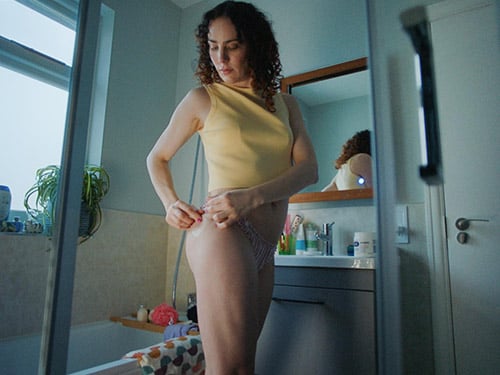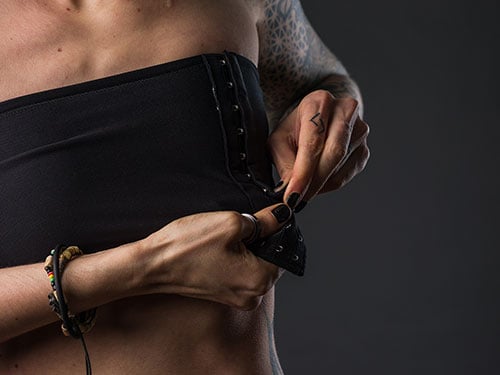Understanding skin changes from testosterone therapy
Many transgender, non-binary and gender diverse people seek hormone replacement therapy (HRT) or gender-affirming hormone therapy (GAHT), as part of their transition journey. Usually administered through tablets, gel, injections or patches, these additional hormones can trigger physical changes in the body, that help that person align with their gender identity.
There are several changes to the skin that may happen as a result of starting testosterone hormone replacement therapy. By being equipped with the knowledge of possible developments, this can help take care of any skin adjustments quickly and comfortably.
We’ve funded research and worked closely with leading experts in transgender healthcare to create a guide on what skin conditions may be experienced during testosterone therapy.
This research dived into published studies of skin conditions that may occur during the transition journey. After screening over 500 research papers and following a robust quality assessment, this study evolved into a paper, which signposts to the most reported skin changes during different stages of transition. We appreciate this may mean that there are some limitations in the article including age and ethnic groups.
Transition journeys are very much an individual experience, and some symptoms may be experienced that don’t appear here, and some that are included in the article may not be experienced at all. These limitations are here due to the very limited research which has been done in this space to date. This is why we feel it is important to provide more resources and information for those who may need or want it.
What is testosterone therapy?
Testosterone therapy is used in trans men, transmasculine, transmasc, non-binary and gender diverse people to encourage physical changes in the body to develop typically masculine characteristics such as facial hair growth, deepening of the voice, increased muscle mass, and redistribution of body fat. It also stops menstrual cycles and decreases the ovaries’ ability to make oestrogen. Some choose to combine this hormone therapy with other medical, surgical and/or social transition methods.
Skin changes from testosterone therapy:
Medical research shows that a significant proportion of trans+ people who undergo hormone therapy see changes to their skin as a result. In a study of 442 people, 48.4% received a skin-related diagnosis or treatment while undergoing hormone therapy (Imhof et al., 2020)1 . We’ve included information below on some common skin developments that can arise.
1. Imhof, R. L., Davidge-Pitts, C. J., Miest, R. Y. N., Nippoldt, T. B., & Tollefson, M. M. (2020). Dermatologic disorders in transgender patients: A retrospective cohort of 442 patients. Journal of the American Academy of Dermatology, 83(5), 1516–1518. https://doi.org/10.1016/j.jaad.2020.06.074
Acne
What is acne?
Acne is a skin condition that happens when your hair follicles become blocked with excess oil (sebum) and dead skin cells. This causes whiteheads or blackheads to appear on any part of the body, that can be hot or painful to the touch.
What’s the connection between acne and testosterone therapy?
Taking testosterone can increase sebum production within the deeper layers of your skin, making the chances of irritation and the blocking of hair follicles much higher. This means that those who may have suffered with acne may find their symptoms worsen, or people may start to develop acne for the first time.
In a survey study looking at acne, researchers found that trans men were more likely to report history of moderate-to-severe acne (28.0%) and current moderate-to-severe acne (13.6%) (Yeung et al., 2020)2.
Acne triggered by testosterone therapy varies from person to person. That means, it can appear in different parts of the body, take effect in varying degrees, and there is no guaranteed timeline for how long it can last. For some, this might appear as small breakouts as their body adjusts to new hormone levels. For others, this may be longer term, appearing between the first 6 to 12 months of testosterone therapy. It is also possible that this is a skin condition that will be present throughout the entire duration of the therapy. This is something that is determined by the chemistry of your skin, the prescribed dose of testosterone, as well as other lifestyle factors such as weight, smoker status and nutrition.
The development of acne for those taking testosterone therapy is common, and there have been very positive responses to this from the community, with many trans men and non-binary folk viewing this an early sign of testosterone taking action.
If you are seeking support for acne, we always recommend speaking to a healthcare professional, who can provide an approach for treatment that works best alongside the prescribed testosterone dosage.
2. Yeung, H., Ragmanauskaite, L., Zhang, Q., Kim, J., Tangpricha, V., Getahun, D., Silverberg, M. J., & Goodman, M. (2020). Prevalence of moderate to severe acne in transgender adults: A cross-sectional survey. Journal of the American Academy of Dermatology, 83(5), 1450–1452. https://doi.org/10.1016/j.jaad.2020.02.053
Pattern Hair Loss (Androgenic Alopecia)
What is pattern hair loss?
Pattern hair loss, or androgenic alopecia, is the loss of the hair on the scalp. This most often happens in a M-shaped pattern, starting at the forehead and moving backwards. Hair can also thin at the top of the head and progress to partial or complete baldness.
What’s the connection between pattern hair loss and testosterone therapy?
While testosterone therapy doesn’t directly cause hair loss, the increase of the hormone in the body can lead to androgenic alopecia, if an individual has a genetic sensitivity to the hormone DHT (dihydrotestosterone). Testosterone and DHT (dihydrotestosterone) are interlinked because when testosterone levels rise, DHT levels typically rise as well. However, there are other lifestyle and genetic causes such as smoking, lack of nutrition or stress.
Pattern hair loss is typically considered a genetic condition, so it is recommended to look into family history for any signs of hair loss if this concerns you.
The good news is, there are many options available to mitigate hair loss symptoms if this is desired, but we always recommend speaking to a healthcare professional, who can provide treatment that works best alongside the prescribed testosterone therapy if this is a route wished to be taken.
Feeling comfortable in your skin:
Seeing changes to skin whilst undergoing testosterone therapy can be both euphoric, and a challenge. By knowing what these effects may be and where to seek support, we hope to bring comfort back to skin, as quickly as possible.
Understanding skin changes from…


Oestrogen and Anti-androgen therapy

Gender affirming surgery










